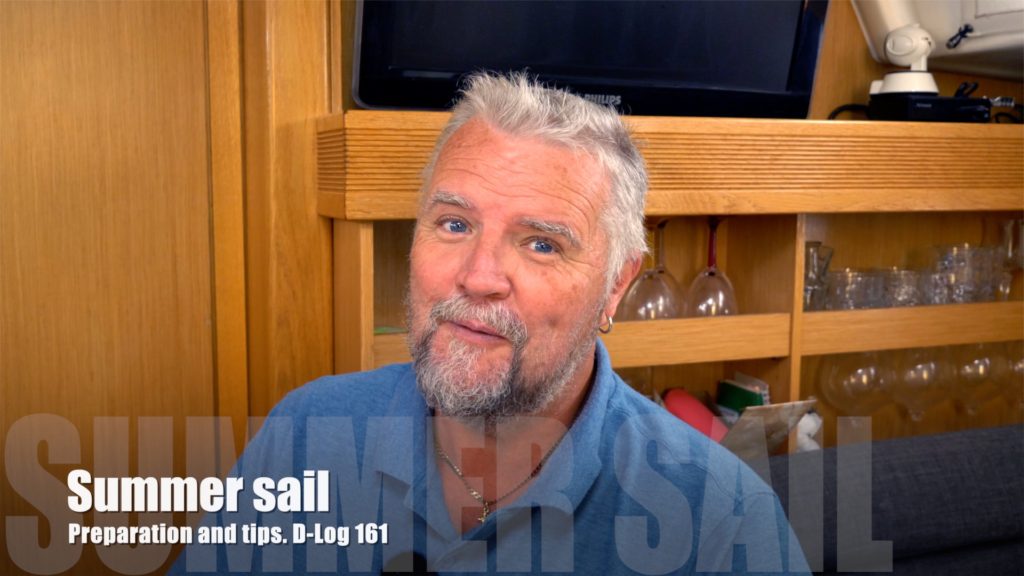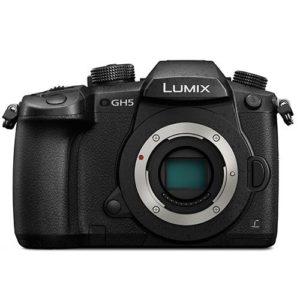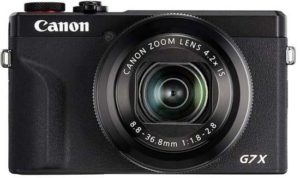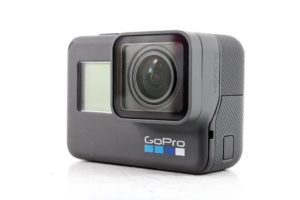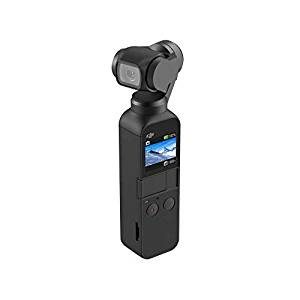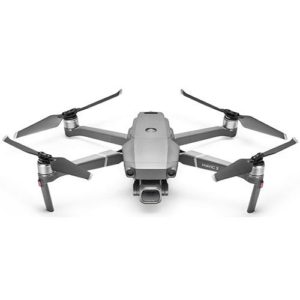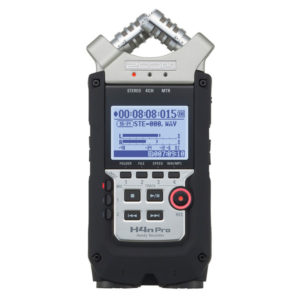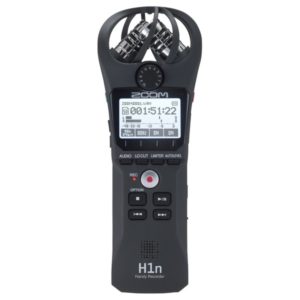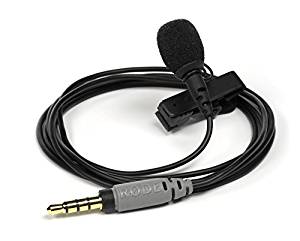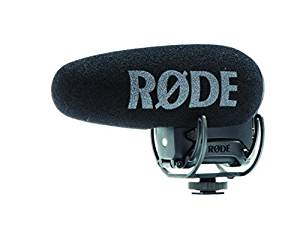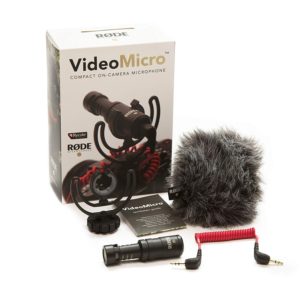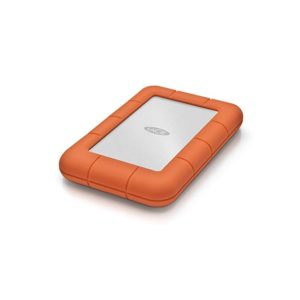Posts in Category: Day to Day
Living the Dream: 40 Reasons Why Living on a Sailboat Full-Time is the Ultimate Lifestyle
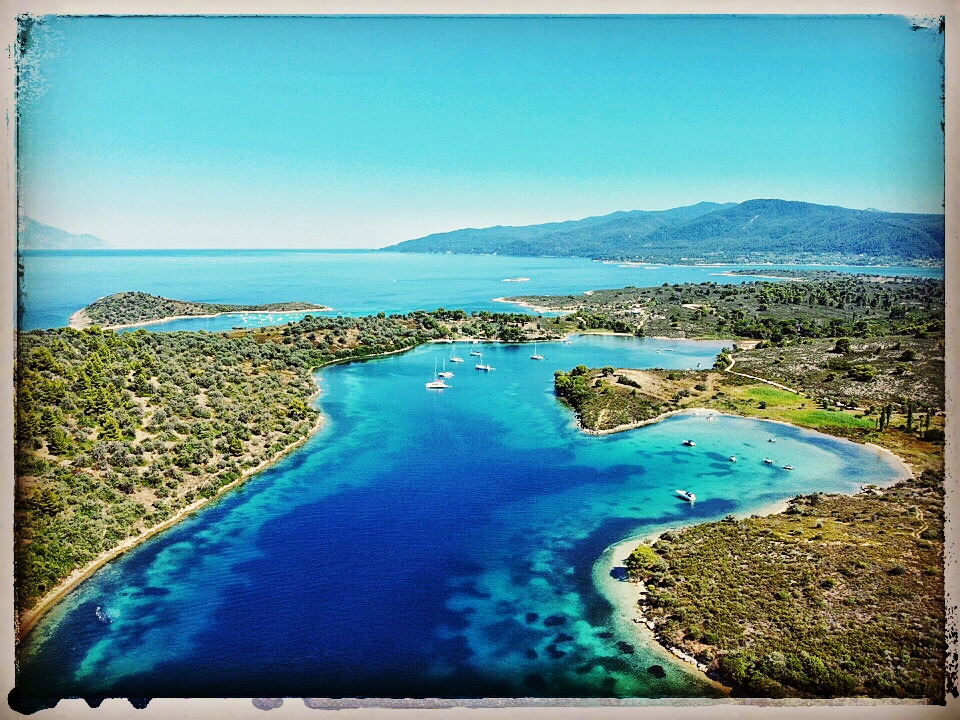
Living the Dream: 40 Reasons Why Living on a Sailboat Full-Time is the Ultimate Lifestyle
Living on a sailboat full-time is a dream for many people, and for those who have made the leap, it can be a life-changing experience. While it certainly isn’t for everyone, there are countless benefits to living on a sailboat full-time. Here are 40 of the top benefits:
- Adventure – Living on a sailboat full-time provides endless opportunities for adventure. You can explore new places, meet new people, and experience life in a way that is completely different from anything you’ve ever known.
- Simplicity – Living on a sailboat full-time means living a simpler life with fewer possessions and less clutter. It can be a refreshing change from the fast-paced, consumer-driven lifestyle that is so common in modern society.
- Freedom – Living on a sailboat full-time gives you the freedom to go where you want, when you want. You can explore new places, chase the weather, and set your own schedule.
- Connection to Nature – Living on a sailboat full-time puts you in direct contact with nature on a daily basis. You’ll be able to enjoy stunning sunsets, clear water, and the sound of the waves lapping against the hull.
- Minimal Carbon Footprint – Living on a sailboat full-time means living a low-impact lifestyle with a minimal carbon footprint. You’ll be using wind power to travel and can generate your own electricity with solar panels and wind turbines.
- Flexibility – Living on a sailboat full-time means you can easily relocate to a new destination if you desire. You can move with the seasons, explore new areas, and experience new cultures.
- Cost Savings – Living on a sailboat full-time can be significantly less expensive than living on land. You’ll save money on rent or mortgage payments, property taxes, and utilities.
- Self-Sufficiency – Living on a sailboat full-time requires you to be more self-sufficient. You’ll need to generate your own power, catch your own food, and take care of your own repairs.
- Minimalism – Living on a sailboat full-time requires you to live a minimalist lifestyle. You’ll need to be intentional about what possessions you bring on board and what you leave behind.
- Health and Fitness – Living on a sailboat full-time can be great for your health and fitness. You’ll be more active, spending more time outside, and enjoying fresh air and sunshine on a daily basis.
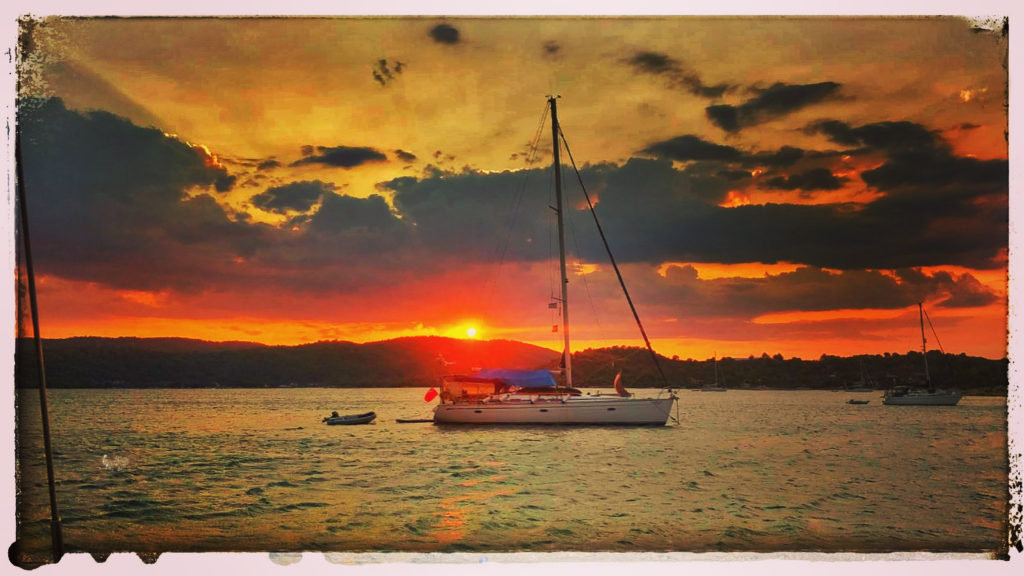
Are you sold yet? Read on for 30 more reasons for living on a sailboat full-time…
- Reduced Stress – Living on a sailboat full-time can be a great way to reduce stress. You’ll be living a simpler, slower-paced life and can focus on what’s truly important.
- Stronger Relationships – Living on a sailboat full-time can help you build stronger relationships with those around you. You’ll be spending more time together, working together as a team, and enjoying new experiences together.
- Independence – Living on a sailboat full-time means being more independent. You’ll need to rely on your own skills and resources to solve problems and overcome challenges.
- New Skills – Living on a sailboat full-time can help you develop new skills, such as sailing, navigation, and boat maintenance.
- Increased Creativity – Living on a sailboat full-time can be a great way to increase your creativity. You’ll be living in a small space and will need to find creative solutions to problems.
- Sense of Community – Living on a sailboat full-time can help you feel a sense of community with other boaters. You’ll be part of a unique group of people who share a common interest.
- Unique Lifestyle – Living on a sailboat full-time is a unique lifestyle that can be a great conversation starter and can help you stand out from the crowd.
- Travel Opportunities – Living on a sailboat full-time opens up a whole new world of travel opportunities. You can explore new coastlines, visit remote islands, and discover hidden coves that are only accessible by boat.
- Sense of Accomplishment – Living on a sailboat full-time can give you a sense of accomplishment that comes from being self-sufficient and mastering the skills required to live on a boat.
- Intimacy with Nature – Living on a sailboat full-time allows you to be up close and personal with nature. You can watch dolphins swim by, observe sea birds in their natural habitat, and even catch your own fish for dinner.
- Adaptability – Living on a sailboat full-time requires you to be adaptable and flexible. You’ll need to be able to adjust to changing weather conditions, repair equipment on the fly, and deal with unexpected situations.
- Unique Work Opportunities – Living on a sailboat full-time can open up unique work opportunities, such as working as a charter captain or crew member on a larger yacht.
- Connection to History – Living on a sailboat full-time can help you feel connected to the history of sailing and maritime culture. You’ll be carrying on a tradition that dates back thousands of years.
- Minimal Environmental Impact – Living on a sailboat full-time means having a minimal impact on the environment. You’ll be using renewable energy sources and not contributing to the pollution that is so common on land.
- Mindfulness – Living on a sailboat full-time can help you cultivate a sense of mindfulness and presence. You’ll be living in the moment and enjoying the simple pleasures of life.
- Connection to the Ocean – Living on a sailboat full-time can give you a deeper connection to the ocean and its inhabitants. You’ll be more aware of the tides, currents, and weather patterns, and will be able to observe marine life up close.
- Improved Communication – Living on a sailboat full-time can help you improve your communication skills. You’ll need to communicate effectively with your crew, other boaters, and marina staff.
- Increased Confidence – Living on a sailboat full-time can help you develop increased confidence in your own abilities. You’ll be mastering new skills and overcoming challenges on a daily basis.
- Sense of Adventure – Living on a sailboat full-time can help you cultivate a sense of adventure that is often missing in modern life. You’ll be exploring new places and experiencing new things on a regular basis.
- Connection to the Weather – Living on a sailboat full-time can help you feel more connected to the weather and the natural world. You’ll be more aware of the wind, rain, and sun, and how they affect your daily life.
- Increased Creativity – Living on a sailboat full-time can inspire increased creativity in all aspects of your life. You’ll be living in a unique environment that can spark new ideas and ways of thinking.
- Enhanced Self-Discovery – Living on a sailboat full-time can help you discover new things about yourself and your own capabilities. You’ll be forced to confront your fears and limitations, and will discover strengths and skills you didn’t know you had.
- Freedom from Materialism – Living on a sailboat full-time means being free from the pressures of materialism and consumer culture. You’ll be able to focus on experiences and relationships, rather than accumulating possessions.
- Connection to the Night Sky – Living on a sailboat full-time can give you a deeper connection to the night sky. You’ll be away from the lights of the city and can enjoy a clear view of the stars and constellations.
- Sense of Peace – Living on a sailboat full-time can help you cultivate a sense of peace and tranquility. You’ll be away from the noise and stress of the city, and will be able to appreciate the simple pleasures of life.
- Improved Health – Living on a sailboat full-time can have positive effects on your health. You’ll be more physically active, spending time swimming, snorkeling, and exploring new places. You’ll also have access to fresh air and sunshine on a daily basis.
- Community – Living on a sailboat full-time can help you become part of a community of like-minded individuals. You’ll meet other boaters in marinas and anchorages, and can form lasting friendships with people from all over the world.
- Learning Opportunities – Living on a sailboat full-time means constantly learning new things. You’ll be learning about sailing, navigation, weather patterns, and marine life, as well as improving your cooking and maintenance skills.
- Reduced Cost of Living – Living on a sailboat full-time can be a more affordable way of life than living on land. You won’t have to pay rent or a mortgage, and can save money on utilities and transportation.
- Increased Appreciation for Life – Living on a sailboat full-time can help you develop a deeper appreciation for life and the world around you. You’ll be living in the moment and experiencing new things on a daily basis, and will come to appreciate the simple pleasures of life.
Living on a sailboat full-time is not for everyone, but for those who are drawn to this lifestyle, it can be a truly rewarding and fulfilling way of life. From the sense of adventure and connection to nature, to the community and learning opportunities, there are countless benefits to living on a sailboat full-time. Whether you’re considering this lifestyle as a temporary break from the rat race, or as a permanent way of life, there’s no denying the unique and special experience that living on a sailboat can offer.

So…I’m sure there are 40 more things that can be added to this list. What can you add? Leave a comment below.
What are the reasons you love the sailing life?
Please leave them in the comments below.
Fair winds and calm seas
Carl and Jenny
If you enjoyed this blog post please check out our Freebies page where you can download other guides, and if you’re feeling really good consider having a look at our Support us page.
The Importance of a Thorough Pre-Passage Checklist: A Sailor’s Perspective
Sailing can be an exciting and rewarding experience, but it’s important to take safety seriously. Before setting sail, it’s essential to conduct a pre-passage check to ensure that everything is in good working order and that you have all the necessary equipment on board. In this blog post, we’ll go over some of the key items to include on your pre-passage checklist.
1. Check the weather
Before setting sail, it’s important to check the weather forecast. Make sure to look at both the current conditions and the forecast for the duration of your planned voyage. If the forecast indicates strong winds or rough seas, you may want to reconsider your plans. Additionally, make sure you have a way to receive weather updates while at sea.
2. Inspect the hull
Before leaving the dock, take a close look at the hull of your boat. Look for any cracks, blisters, or other damage that could compromise the boat’s integrity. Pay particular attention to the waterline, where damage is more likely to occur. If you notice any damage, have it repaired before setting sail.
3. Check the rigging
Inspect the rigging of your boat, including the mast, shrouds, and stays. Look for any signs of wear or damage, such as frayed or kinked lines. Make sure all connections are secure and that all lines are properly tensioned. If you notice any problems, address them before leaving port.
4. Check the sails
Inspect your sails for any signs of wear or damage, such as tears, holes, or worn areas. Check that all battens are securely in place and that the sail is properly rigged. Make sure you have all necessary sails on board for the conditions you expect to encounter.
5. Check the engine
Before setting sail, check the engine to ensure that it’s in good working order. Check the oil level, coolant level, and fuel level. Make sure all belts are properly tensioned and that the impeller is in good condition. Start the engine and let it run for a few minutes to make sure it’s operating properly.
6. Check the navigation equipment
Make sure all navigation equipment is in good working order. This includes the GPS, compass, charts, and any other navigation aids you plan to use. Check that all batteries are fully charged and that you have backups in case of equipment failure.
7. Check the safety equipment
Before setting sail, make sure you have all necessary safety equipment on board. This includes life jackets, flares, fire extinguishers, and first aid supplies. Check that all equipment is in good working order and that you have enough supplies for the length of your voyage.
8. Check the communication equipment
Make sure you have all necessary communication equipment on board, such as a VHF radio and a satellite phone. Check that all equipment is in good working order and that you have backup communication options in case of equipment failure.
9. Check the provisions
Make sure you have enough food, water, and supplies on board for the length of your voyage. Check that all food is properly stored and that you have enough cooking fuel. Make sure you have a plan for disposing of waste while at sea.
10. Review your plan
Before setting sail, review your passage plan to ensure that it’s safe and feasible. Make sure you have a backup plan in case of unexpected weather or other challenges. Ensure that everyone on board knows the plan and their roles in case of emergency.
Remember to prioritize safety above all else and to never hesitate to call for help if you need it. With the right preparation, sailing can be a rewarding and enjoyable experience for everyone on board.
11. Check the anchoring equipment
Anchoring is an essential part of sailing, especially if you plan to spend the night at anchor. Before leaving port, make sure you have all necessary anchoring equipment on board, including anchors, chain, and line. Inspect all equipment for wear or damage and make sure you have enough line to anchor in the depths you plan to encounter.
12. Check the bilge pump
A functioning bilge pump is essential to keep water out of the boat. Before leaving port, make sure your bilge pump is in good working order. Check that it turns on automatically and that the float switch is properly functioning. Make sure you have a backup manual pump in case of electrical failure.
13. Check the battery power
Before setting sail, check the battery power of your boat. Make sure all batteries are fully charged and that you have enough power to run all necessary equipment while at sea. Bring extra batteries or a generator if necessary.
14. Check the head (toilet)
The head is an essential component of any boat, especially for longer voyages. Before leaving port, check that your head is in good working order. Make sure you have enough toilet paper and a plan for disposing of waste while at sea.
15. Check the fuel and water tanks
Make sure you have enough fuel and water on board for the length of your voyage. Check that all tanks are full and that you have enough fuel to operate the engine and generator. If you plan to rely on water catchment, make sure you have enough capacity to catch and store enough water.
16. Check the weather forecast
Before setting sail, check the weather forecast for the duration of your voyage. Make sure you understand the conditions you can expect to encounter and adjust your plans accordingly. If you’re not experienced in reading weather forecasts, consider consulting a professional or experienced sailor to help you interpret the information.
17. Check the communication equipment
Effective communication is essential for safety while sailing. Before leaving port, make sure all communication equipment on board is in good working order. Test your VHF radio and make sure you have backup communication options like a satellite phone or handheld VHF.
18. Check safety equipment
Make sure you have all necessary safety equipment on board, including life jackets, flares, and a first aid kit. Inspect all equipment for wear or damage, and make sure everyone on board knows how to use it in case of an emergency.
19. Check navigation equipment
Navigational equipment is essential for safe sailing, especially if you’re venturing into unfamiliar waters. Before leaving port, check that all navigational equipment is in good working order. Make sure you have charts, a compass, and a GPS, and make sure everyone on board knows how to use them.
20. Check the crew
Last but not least, make sure your crew is ready and prepared for the voyage ahead. Conduct a safety briefing before leaving port, and make sure everyone knows their roles and responsibilities on board. Make sure everyone on board is comfortable and familiar with the boat and its equipment, and that everyone is well-rested and prepared for the journey.
By following these pre-passage check list steps, you can ensure that you and your crew have a safe and successful voyage. Remember, preparation is key when it comes to sailing, and taking the time to conduct a thorough pre-passage check can help prevent accidents and ensure a memorable and enjoyable experience.
Is there something else you check as part of your pre-passage checks before you go out? Let us know in the comments below.
Fair winds and calm seas,
Carl and Jenny
If you enjoyed this blog post please check out our Freebies page where you can download other guides, and if you’re feeling really good consider having a look at our Support us page.
Surviving the Unexpected: Coping with Emergencies Onboard Your Boat
1. Equipment failure
2. Man overboard
3. Weather-related emergencies
4. Medical emergencies
5. Collision or grounding
6. Fire
Carl and Jenny
If you enjoyed this blog post please check out our Freebies page where you can download other guides, and if you’re feeling really good consider having a look at our Support us page.
Sailing the World on a Budget: How to Fund and Live a Nomadic Sailing Lifestyle
1. Live frugally
2. Work remotely
3. Charter your boat
4. Teach sailing
5. Blogging and Social Media
6. Find seasonal work
“Surviving the Unexpected: Coping with Emergencies Onboard Your Boat”
Carl and Jenny
If you enjoyed this blog post please check out our Freebies page where you can download other guides, and if you’re feeling really good consider having a look at our Support us page.
The Benefits of Naturism on Boats: Exploring the Freedom and Wellness of a Clothing-Optional Lifestyle at Sea
Well it’s no secret that we are both naturists. We became “open” about it a few years ago. We were quite shocked to find out that quite a few of our friends were also naturists but didn’t like to admit to it. I (Carl) wrote a piece about how it helped me some time ago when I was diagnosed with complex PTSD. The post is over on our Patron page.
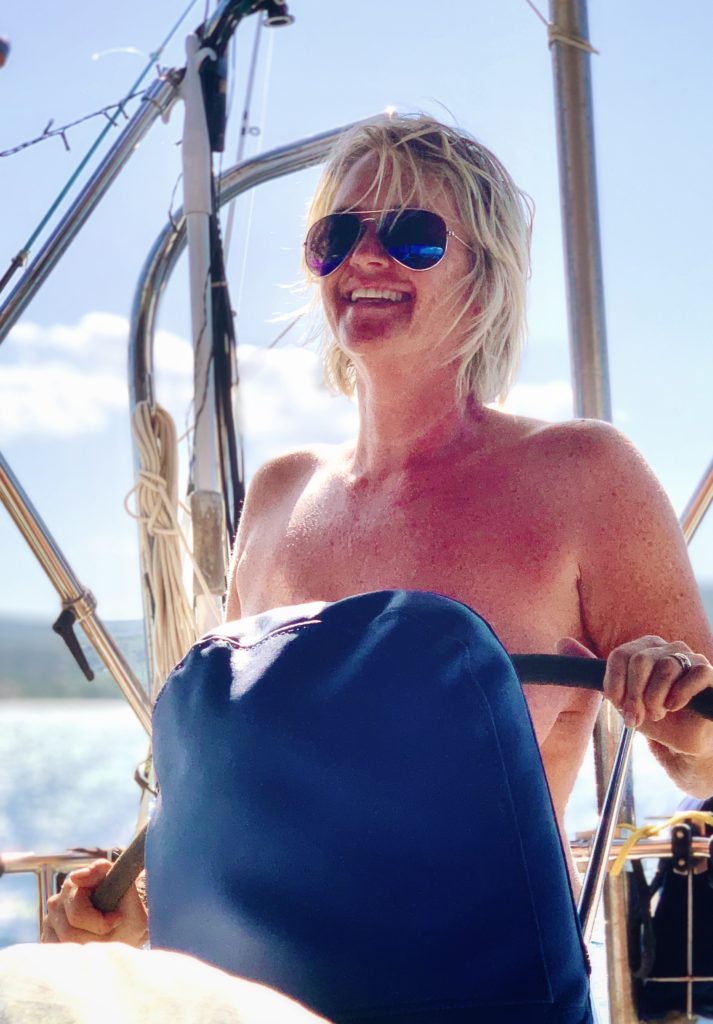
Naturism may shock some people, some may think it’s vulgar and dirty, others may think there’s some perverse connotation to it, but for many, the biggest survey ever into naturism has found 14% of people now describe themselves as naturists or nudists: an estimated 6.75 million – or one in seven people.
Naturism, or the practice of being naked in social and recreational settings, has been around for centuries. It’s a lifestyle that promotes body positivity, acceptance, and the freedom to express oneself without judgment. For those who love being on the water, naturism on boats is a natural extension of this lifestyle that can offer a range of benefits for both physical and mental wellbeing.
First and foremost, naturism on boats is great for physical health. Being naked allows the skin to breathe and soak up essential Vitamin D from the sun, which is important for maintaining strong bones and a healthy immune system. Vitamin D also helps to reduce the risk of diseases such as cancer, heart disease, and multiple sclerosis. Additionally, being naked on a boat can help to regulate body temperature, making it easier to stay cool in the hot sun and avoid overheating.
Beyond the physical benefits, naturism on boats can also have a positive impact on mental health. For many people, being naked in social settings can be a liberating experience that promotes body positivity and self-acceptance. Naturism on boats can provide a sense of freedom and connection to nature that can be difficult to find in our modern, technology-driven world. Being surrounded by the natural beauty of the ocean, the wind in your hair, and the sun on your skin can be a transformative experience that promotes relaxation, mindfulness, and a sense of calm.
Naturism on boats can also foster a sense of community and social connection. By participating in a naturist boating group or club, you can meet like-minded individuals who share your passion for being on the water and embracing a clothing-optional lifestyle. Naturism on boats can provide a sense of camaraderie and belonging that can be difficult to find in traditional social settings.
Another benefit of naturism on boats is the sense of adventure and exploration it can provide. Boating allows you to travel to new destinations, explore hidden coves and beaches, and experience the beauty of the ocean in a way that few other activities can match. Naturism on boats can provide an added sense of freedom and adventure, allowing you to connect with nature and explore new horizons without the constraints of clothing or societal norms.
Of course, as with any activity, it’s important to take proper safety precautions when engaging in naturism on boats. Make sure to wear appropriate sunscreen and protective gear, and be aware of potential hazards such as strong currents, wildlife, and inclement weather. Additionally, it’s important to respect the privacy and boundaries of others when engaging in naturism on boats, and to seek out like-minded individuals and groups who share your values and interests.
In conclusion, naturism on boats can offer a range of benefits for both physical and mental wellbeing. From promoting body positivity and self-acceptance to fostering a sense of community and adventure, naturism on boats can be a transformative experience that promotes relaxation, mindfulness, and a sense of calm. So whether you’re a seasoned naturist or just curious about exploring a clothing-optional lifestyle, consider giving naturism on boats a try and experience the joy and wellbeing benefits for yourself.
Let us know in the comments your thoughts about naturism in general. Are you a naturist? Are you against it? Be interested to hear your thoughts.
Next week: “Sailing the World on a Budget: How to Fund and Live a Nomadic Sailing Lifestyle”
Fair winds and calm seas
Carl and Jenny
If you enjoyed this blog post please check out our Freebies page where you can download other guides, and if you’re feeling really good consider having a look at our Support us page.
Preparing for a Summer Sail: Essential Tips for a Smooth Journey
Ahoy, sailors! 🌊⛵️
In today’s Patron only D-Log video, we’re going to help you prepare for your summer sailing adventures! We’ll cover essential tips, tricks, and safety measures to ensure you have a smooth and enjoyable experience out on the open water.
- Essential gear and equipment you’ll need for your sailing trip 🎒⚓️
- How to plan your route and navigate safely 🗺️🧭
- Weather considerations and how to stay informed about changing conditions 🌦️🌩️
- Tips for maintaining your sailboat and keeping it in top shape 🛠️🧹
- Important safety measures and emergency procedures to keep you and your crew safe 🚨🆘
If you’d like to watch this and over 200 other Patron only videos head over to our Patron channel at Patreon.com/carlandjenny from less than the cost of a cup of coffee per month. Don’t forget to like, comment, and subscribe for more sailing tips and adventures! Hit the notification bell 🔔 to stay updated on our latest content. Let’s set sail and make this summer one to remember! ⛵️🌞🌴
The Ultimate Guide to Antifouling Your Boat: Protect, Preserve, and Perform
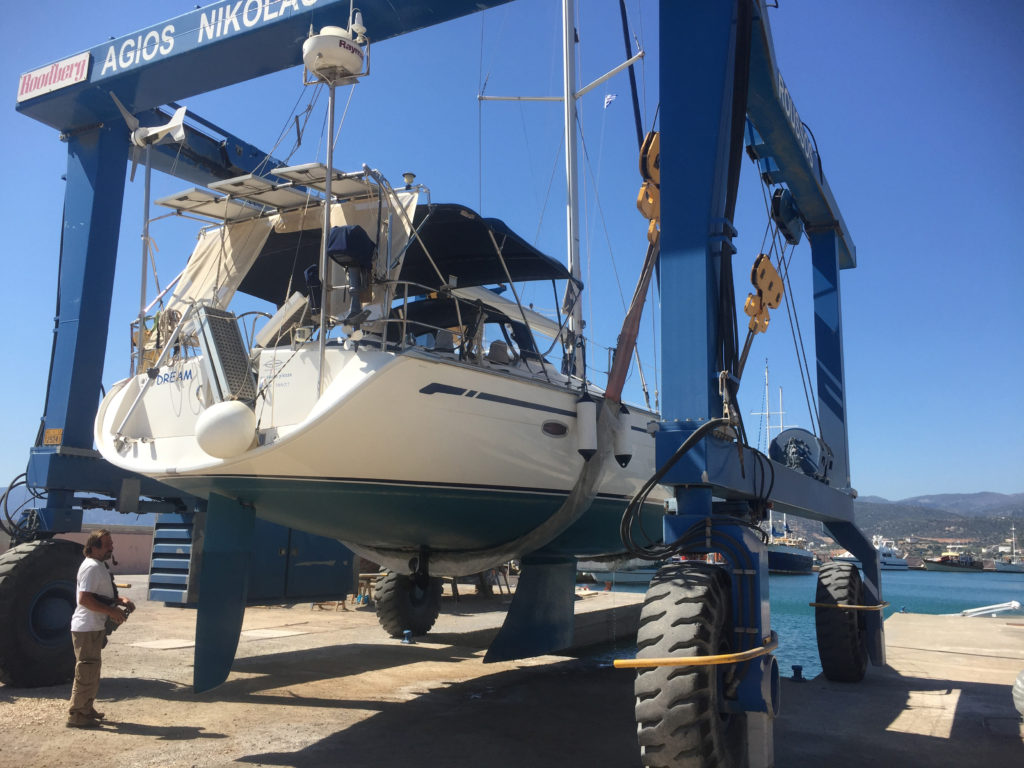
We got to 5000 YouTube Subscribers
We got to 5000 YouTube Subscribers
We made it! We got to 5000 YouTube Subscribers!
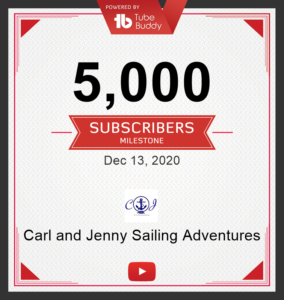
We are so pleased and happy this morning because we woke up to find that our subscriber count has reached 5000! We can’t believe we have come this far already.
This couldn’t have happened without you guys so a massive THANK YOU to each and every one of you for following our channel and clicking that subscribe button. It really does help our channel grow and the more views we get the more inclined we are to put out more content for you.
We have given our production side a big kick and are now putting together more content than we ever have done.
Last month we put out 8 videos on our Patreon channel. So how does that work?
To reward our Patrons we publish, for Patron’s only, a series of regular videos.
Monday we have our D-Log episode. This is where we discuss what’s been happening in real time, we put out hints and tips and it’s a place where we open up a bit more.
Wednesday we have our “Carl and Jenny Talk About” vodcast episode. This is a video version of our weekly podcast. In the podcast we talk about everything that influences our day to day living, not just sailing related. The podcast itself is available on all of the Podcast channels online in just audio format, but for Patrons only we do the video version.
Friday is when we post a regular episode that goes out on YouTube. The Patron version comes out a week earlier and is ad free during that time.
There are other rewards also available depending on what tier Patrons opt for. Any funds we raise from our Patreon channel go directly back into our film making budget, it is not supporting our lifestyle.
So if you are wanting more content for the cost of a cup of coffee, or more if you prefer 😉 then pop over to our Patreon channel for more info by clicking on the image below.
Fair winds,
Carl and Jenny
If you enjoyed this blog post please check out our Freebies page where you can download other guides, and if you’re feeling really good consider having a look at our Support us page.
Photography and Film equipment we use on board.
Photography and Filming gear we use on board
As YouTubers we need a fair amount of filming and photography equipment. We thought we would write a blog post explaining the Photography and Filming gear we use on board of Dream.
The equipment we use is what we have built up over a period of time. We were fortunate that we ran a wedding photography and film company and so had a massive amount of equipment. So much so that we had to sell quite a lot of equipment before we moved aboard as we just didn’t have room to store it all, along with the fact that we didn’t need it all any more.
We are not going to make this blog post too technical as it would go on forever. This is just to give you an idea of what we use to bring you the videos we put out.
So, lets break it up into different pieces of kit:
Filming and Photography
Panasonic Lumix GH5
This is our main camera. This camera is a micro four thirds camera, good for still photography, but a fantastic camera for film use. It’s not too heavy so its comfortable for long shoots, has all the ‘Pro’ features you need. It films in 4K which is now the standard and has more features than most people would ever need. Combined with some ‘fast’ lenses this camera takes some beating. We have pre-sets on ours that can even film in slow motion to a good standard.
Canon G7X mk2
The canon G7X is a compact camera which is easy to carry around, is self contained and comes in a small package. It has a built in lens which has a built in zoom. The great thing about this camera is that it has a screen that can be flipped up so if you are using it in selfie mode you can see what you are recording. We tend to use this camera when we are out and about. The battery life is good and can last for a full day (not continuous). This model only records in High Definition 1080, the new model records in 4K so we may have to update at some point in the future.
GoPro Hero 6 Black
The GoPro is the action camera we use. We have had this one a couple of years now which we bought to upgrade our older model, the Hero 3 Black. The battery life on the 6 is so much better. The Hero 6 Black is waterproof without having to use a special case so is ideal for boat life. Small enough to keep in your pocket and can be ready almost instantly to use. Downside is lowlight filming is a bit noisy, but the capabilities of where you can film with this camera is endless. It’s also voice activated, so you can fit it in a position where you don’t need to reach it, give it a voice command and you can film or take pictures without having to touch it.
Panasonic LUMIX DMC – FT3
This is another waterproof HD camera. No moving parts, slimline and also has a built in GPS. We don’t use the GPS. For quick, instant filming/photos, this is ideal.
DJI Osmo Pocket
This is a new addition to our kit list. The DJI Osmo Pocket is a 4K gimballed camera that gives excellent stabilisation. Just what you need in rough seas lol! We haven’t used this yet in any of our videos but we are looking forward to using it soon.
DJI Mavic Pro Drone
The Mavic Pro is a great Drone with some great features. We don’t use it as much as we should do and promise that next season we will be using it a lot more.
Audio
Sometimes we use external audio recording. if we have a noisy background or are further away from the camera then an external recorder and microphone is how we get around it. The other option we have is to use an external microphone on top of the LUMIX GH5.
Wireless Lavalier Microphones and receiver
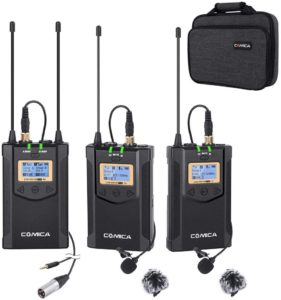
The wireless mics are a great addition to the kit. We can wear these when out and about. You don’t need to be right next to the camera, you can be 100 metres away. These ensure that you capture the sound you want. You do need to connect the receiver to your camera or a seperate audio recorder, and then sync in post.
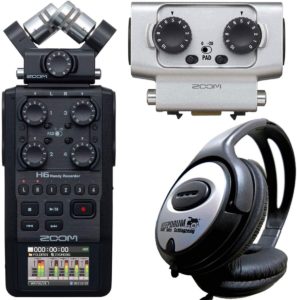
The Zoom H6 is a portable recording studio you can carry anywhere. It has built in microphones and several inputs for extra microphones, headphones or even musical instruments. It records in MP3 and wav files. The sound quality is excellent. We can use this as a standalone recorder or connect it to our computer and use it as an audio interface when recording podcasts or producing music. A great piece of kit and offers that bit more than the older H4we have.
Zoom H4 Audio Recorder
Much like the H6, the Zoom H4 is a portable recording studio you can carry anywhere. It has built in microphones and several inputs for extra microphones, headphones or even musical instruments. It records in MP3 and wav files. The sound quality is excellent. This is our older version, it still does a good job but the H6 offers a bit more.
Zoom H1 Audio Recorder
The Zoom H1 is a portable recorder. It is a one button record system. Again built in mics and a headphone socket so you can monitor your recording and a jack plug where you can plug in an external mic. This one is really small so will fit in any pocket and is easy to hide from view.
Rode Smart Lavalier Microphone.
This microphone has great audio qualities. It’s very small so you don’t even know you are wearing it. It is designed to be used with the Rode recording App on an iPhone. To use it with the Zoom or other recorders you need to purchase the small adapter plug by Rode. The iPhone has 5 terminals on a jack plug and the recorders only need 4. The adapter converts it from 5 to 4 so it works correctly.
Rode VideoMic pro
This fits to the hot shoe of the GH5 camera. It requires a 9Volt battery. It plugs into the microphone socket on the camera. The downside to this mic is if you forget to switch it on, or the battery runs out you don’t get any audio recorded.
Rode Micro
Similar to the Video mic pro but does not require any power. This is ideal because you don’t have to worry about batteries or losing audio. The quality is quite good, it’s also a small convenient size and it has a ‘Dead cat’ to cut down on wind noise.
Editing
We have used different editing software packages. Adobe Premiere and Final Cut Pro X. Now we use Mac computers and Final Cut pro X for all of our editing now.
One of the reasons we no longer use Adobe as they moved over to a subscription only package.
Hard Drives
We also require Hard drives for storing all the footage we record onto. The ones we use mainly for storage and editing now are the LaCie Rugged hard drives. These are shock proof and come in a nice rubber protected case.
We have quite a bit more equipment than this, extra camera bodies, desk mics, lights etc etc. Not to mention all the spare batteries, memory cards, mounts, tripods, monopods. The list goes on.
If you enjoy watching our videos and would like to help support the production of them you can become a Patron by clicking on this LINK. as a Patron you get access to lots of extra videos and other perks depending on what tier you join. There is a tier for everyone.
If you click on any of the links of the equipment we have featured and order anything from Amazon, we get a small commission from amazon at no extra cost to you. It just puts a few coppers into our Amazon affiliate account, which we use to upgrade and replace the equipment we use for filming. If you have any questions about any of the kit we use please comment below and we will get back to you as soon as we can.
Fair winds,
Carl and Jenny
If you enjoyed this blog post please check out our Freebies page where you can download other guides, and if you’re feeling really good consider having a look at our Support us page.
Cruising life starts again this week
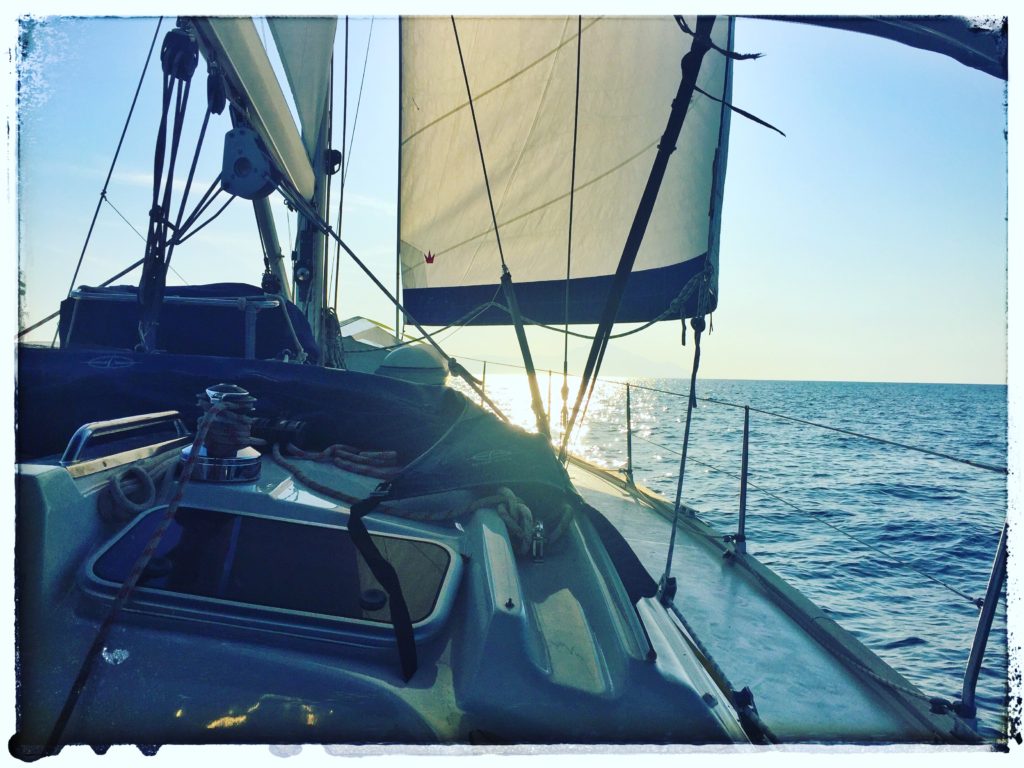
Sailing in Greece
Cruising life starts again this week
At last cruising life starts again this week on SV Dream.
Last month Jen flew back to England to help our daughter move into her new home. We agreed for me to stay here to get a few jobs done on the boat. Our daughter was supposed to have got the keys to the house a couple of days before Jen was arriving, unfortunately there was a delay so no work was being done.
As a surprise, I booked a flight for the following Saturday and turned up unannounced to the delight of everyone. It was a good job because there was so much work that needed doing to the house in addition to painting.
My job’s included, plastering a wall, fitting wall tiles in the kitchen, floor tiles in the bathroom, replacing light fittings and plug sockets and a few other jobs that they wouldn’t have been able to do. We enjoyed our time and even got chance to take a couple of two night breaks away in our camper van.
Back in Crete
So we are now back on the boat and getting ready to set off this week. Looking at the weather window it looks like Thursday morning will be the day to leave the marina. We are still getting the force of the Meltemi winds which are anywhere between 20-38 knots even in the marina. Our plan is to sail to an anchorage a couple of hours away for the shakedown sail, spend a few days there, clean the bottom of the boat and then set off after the weekend for the Dodecanes or Cyclades depending on the most favourable wind direction. If you wonder what weather forecasting software we use here are the 3 main ones, Predict wind Windytv.com windy.app
We are really looking forward to getting back out there on the sea. It seems like a lifetime ago since we were coming back to Crete for the winter, but then again it was 10 months ago! At least we can get out this year. We had written any chance of cruising off this year because of the pandemic, let’s all hope that it will soon pass and things get back to normal.
I saw this quote recently and thought it fit our lifestyle and that I would share it.
Quote
“Can you believe that 5 years ago, I used to wear suits everyday!? It’s pretty funny, because now I have a hard time getter over having to wear shoes! It’s interesting how you connect with your environment and nature when you get to see, live it and eat it.
Life is not about how busy you are, it’s all about the intense moments, real friendship, love, skinny dipping and the crazy stories you get to take away when you’re old.”
Fair winds,
Carl and Jenny
If you enjoyed this blog post please check out our Freebies page where you can download other guides, and if you’re feeling really good consider having a look at our Support us page.

